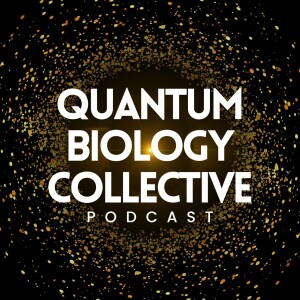
Thursday Apr 18, 2024
EP 072: Coherence, Resilience And The Role of Pain In Our Lives
“Pain is in the brain,” explains Stephen Hussey, doctor of chiropractic and practitioner of functional medicine who returns to the podcast to discuss the way the body interprets, processes and manages pain. In addition to the sensory components of pain, there are cognitive and emotional receptors, as well, which means physical pain is affected by mental and physical stress and vice versa. With enough trauma, the body begins to develop incoherence—which is when body systems are out of sync and unable to communicate. On this episode, Dr. Hussey discusses how we can build coherence and the connection between regulated pain signals and a properly charged system.
A large part of pain management is the attitude we take toward it. Dr. Hussey will explain why we develop chronic pain even long after our injuries have supposedly been resolved, why opioids fail us, and what’s really behind the addiction to them.
Join today’s discussion to hear more about how pain starts, how it evolves and how we can build a resilience to it.
Quotes:
- “You could have an emotional experience that’s very painful, and we describe it that way. And it’s because of these connections between the cognitive area and the emotional areas. Because cognitive, we’re thinking about this thing that happened to us and how terrible it is, and we have an emotional response to it and we describe that as painful. And sometimes it actually can result in physical pain because, again, we’re training it backwards.” (14:38 | Dr. Stephen Hussey)
- “This thing that happened to you—while it’s happening, the amount of communication between the prefrontal cortex and the emotional centers dictates whether or not that pain will become chronic once it’s resolved, or once the injury has resolved, or once the emotional trauma has—quote, unquote—resolved. Once those things have been over and done with, if you, during that time, trained your brain to communicate—the emotional and cognitive centers of the brain—you will have chronic pain, but if you didn’t, you very likely won’t have chronic pain.” (27:01 | Dr. Stephen Hussey)
- “That’s what we should be focusing on in pain, is how to change the brain. Not just block a pain signal, but how do we change the brain.” (55:22 | Dr. Stephen Hussey)
Links
Connect with Dr. Stephen Hussey:
Website: www.resourceyourhealth.com
Socials:
https://www.instagram.com/drstephenhussey/
https://www.facebook.com/DrStephenHussey/
Book "Understanding The Heart: Surprising Insights Into The Evolutionary Origins Of Heart Disease – And Why It Matters
QBC Podcast #18: How Light Helps Our Hearts with Dr Stephen Hussey
To receive a FREE infographic of the Ideal Circadian Day & join our email list: https://www.quantumbiologycollective.com/qbc-newsletter-aqb
To find a practitioner who understands quantum biology: www.quantumbiologycollective.org
To see details about the Applied Quantum Certification: www.appliedquantumbiology.com
Follow on Instagram & Facebook: @quantumbiologycollecitve
Twitter: @quantumhealthtv
No comments yet. Be the first to say something!